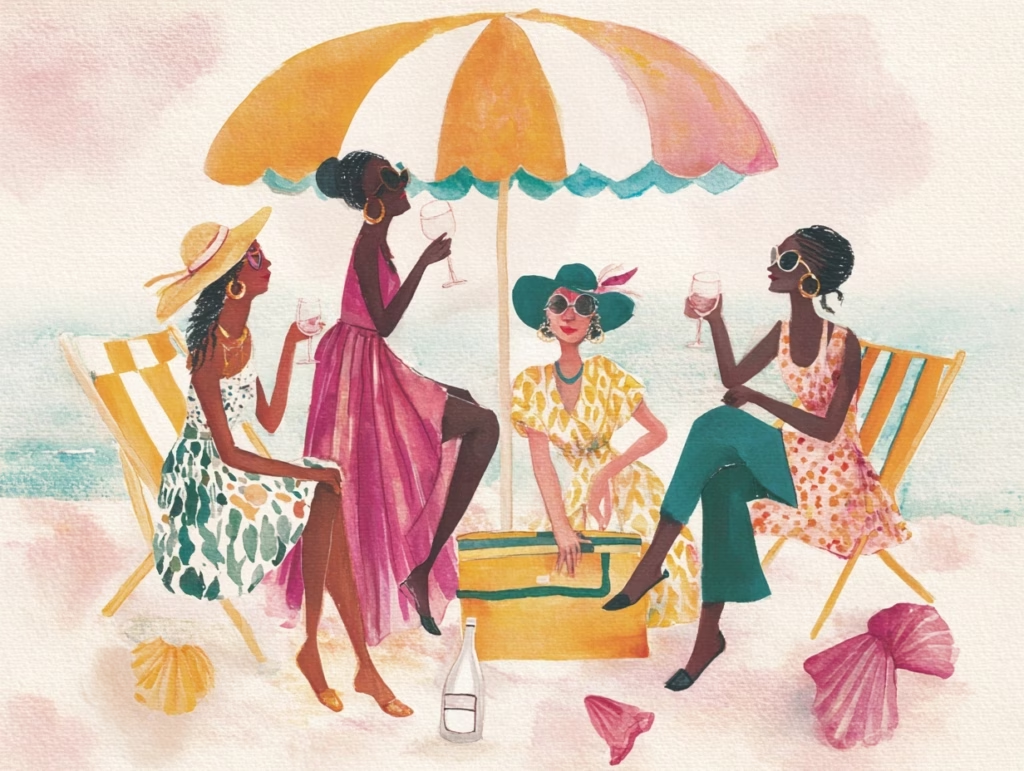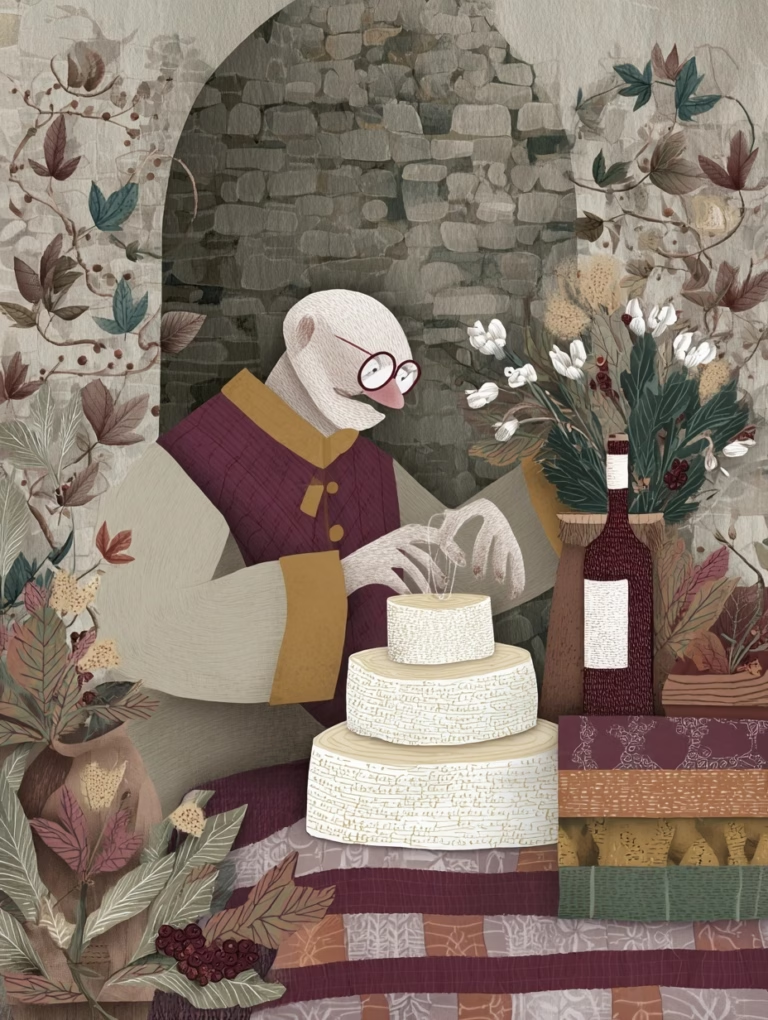Keeping it Cool: A Beginner’s Guide to Serving Wine at Temperature
Serving wine at the right temp is a tiny detail that makes a huge difference. It brings out all the good stuff—crispness, aroma, depth. Think whites that actually taste refreshing, reds that feel smooth and cozy (not flabby or flat), and bubbles that sparkle just right. But don’t worry—you don’t need a wine cellar or a PhD in thermodynamics.

Picture this: You finally splurged on a bottle you’ve been eyeing, you’ve got the perfect Instagram-worthy setup, the right glass, and then… it tastes like expensive disappointment. Plot twist: the wine might be amazing—you just served it wrong.
Why Wine Temperature Matters More Than You Think
When the temps start rising, wine temperature becomes more than just a nice-to-have—it’s essential. Because if you’ve ever popped open a bottle and thought, “Hmm… why does this taste kind of meh?”—it might not be the wine; it might be the temperature.
Serving wine at the right temp is a tiny detail that makes a huge difference. It brings out all the good stuff—crispness, aroma, depth. Think whites that actually taste refreshing, reds that feel smooth and cozy (not flabby or flat), and bubbles that sparkle just right. But don’t worry—you don’t need a wine cellar or a PhD in thermodynamics.
Here’s your cheat sheet for wine serving temperatures:
| Wine Type | Temperature | Vibe Check |
| 🍾 Sparkling | 38-45°F | Fridge cold |
| 🤍 White | 45-55°F | Slightly chilled |
| 🌸 Rosé | 45-55°F | White wine energy |
| 🍊 Orange | 50-55°F | Soft chill |
| ❤️ Red | 55-65°F | Cool room temp |
| 🍯 Dessert | 40-55°F | Depends on style |
What temperatures should you serve serve major types of wine?
🍾 Sparkling Wine
Ideal temp: 38–45°F (fridge cold)
Think of Champagne, Prosecco, and pét-nat like you would soda or seltzer—colder temps keep those bubbles lively and refreshing. A quick chill in an ice bucket (half water, half ice) for 20 minutes does the trick if you’re short on time.
Serve Tip: Keep a wine chiller sleeve in your freezer and slip it on while serving to maintain the sparkle.
Pro Tip: Adding water to your ice bucket increases surface contact with the bottle, making it chill faster than ice alone (a trick the sommeliers in Somm somehow skipped).
🧊 White Wine
Ideal temp: 45–55°F
This includes everything from Sauvignon Blanc to Chardonnay. Lighter whites like Pinot Grigio lean toward the cooler end, while richer whites like oaked Chardonnay benefit from a little warmth to open up.
Serve Tip: If it came from the fridge, let it sit out for 10–15 minutes before serving. If it came from your countertop, pop it in the fridge for 30.
🌸 Rosé
Ideal temp: 45–55°F
Rosé likes to party with the whites when it comes to serving temp. Chilled, but not icy—you want the fruit to shine without muting those subtle herbal or floral notes.
Serve Tip: Store your rosé in the fridge and take it out just before serving. An insulated wine tote is perfect for picnics or porch hangs.
🍊 Orange Wine
Ideal temp: 50–55°F
Orange wines (made from white grapes but fermented with their skins, like reds) are wild, textural, and a little funky—in the best way. They’re happiest with a soft chill, not a deep freeze.
Serve Tip: Pull it from the fridge 30 minutes before pouring, and you’re golden.
🍷 Red Wine
Ideal temp: 55–65°F
Not “room temperature” unless you live in a castle with no central heating. Lighter reds like Pinot Noir, Gamay, or chillable reds do best around 55°F. Heavier reds like Cabernet or Syrah prefer closer to 60–65°F—but even those benefit from a little time in a cooler spot if your house runs warm.
Serve Tip: If your red feels too warm, pop it in the fridge for 10–15 minutes before serving. A wine thermometer is handy, but honestly? Trust your hands. If the bottle feels slightly cool to the touch, you’re probably close.
🍬 Dessert Wine
Ideal temp: 40–55°F (depends on the style)
Dessert wines are your little luxury sippers—the velvet robes of the wine world. And just like your favorite perfumes, they show up very differently depending on the mood (aka, the temperature). The ideal serving temp varies by style, so here’s the sweet scoop:
- Moscato – Light, floral, and super easygoing. Serve this one cold cold—closer to 40°F—especially if it’s sparkling. It’s bright, fruity, and feels like a fizzy peach picnic in a glass.
- Ice Wine (Eiswein) – Made from grapes harvested frozen on the vine, this one is pure magic. Intensely sweet but with zingy acidity that makes it taste like frozen fruit nectar. Best served cold—around 40–45°F. It’s a showstopper on its own or with something creamy (hi, cheesecake).
- Sauternes / Tokaji – French and Hungarian beauties made from botrytized grapes (which taste like honey and apricots). Best around 45–50°F. Too cold and they get shy; too warm and they lean into syrup territory.
- Port – A fortified wine from Portugal, and the boldest of the bunch. Tawny and ruby ports do best around 55°F—slightly warmer than the others. That little extra warmth brings out all those cozy caramel, nut, and spice notes.
Serve Tip: Keep dessert wines (except Port) in the fridge and serve chilled—especially after dinner. A small pour goes a long way!
Oops, I Messed Up—Now What? Wine Temperature Troubleshooting
- Wine too cold? Let it warm up for 10-15 minutes. Pour a small taste test every few minutes until it hits that sweet spot.
- Wine too warm? Quick fridge stint (10-15 minutes) or emergency ice bucket rescue. Your wine will thank you.
- Forgot your bottle in the freezer? Been there! If it’s not frozen solid, let it thaw slowly in the fridge. If there’s ice crystals… maybe save it for cooking.
Favorite Tools for Keeping Wines at the Right Temp
Good news: you’re not in it alone. These tools can help you keep it cool (but not cold cold):
- Insulated wine sleeves – Great for a quick chill and keeping bottles cool on the table
- Double-walled wine coolers – Sleek, pool-friendly, and they don’t sweat, these guys help keep wine at temp even after its been poured
- Fridge thermometer – Helps you know if your wine fridge (or regular fridge) is actually hitting the right temps
- Ice bucket with water + ice – The classic move that never fails (don’t forget to add water to the bucket to increase surface area)
- Wine fridge – A splurgy but game-changing upgrade if you’re stocking multiple bottles at once. Go for one that’s dual-zone to keep reds and whites happy at their own temps.
Pro Tip: Pressed for time and tools? Soak a paper towel in water, wrap it around the bottle, and pop it in the freezer for 20–30 minutes. Just don’t forget it in there (been there).
Final Sips
Serving wine at the right temperature isn’t about perfection—it’s about small steps that make your wine taste even better. A little chill here, a little rest there, and suddenly, your weeknight wine feels like it came from your favorite wine bar.



